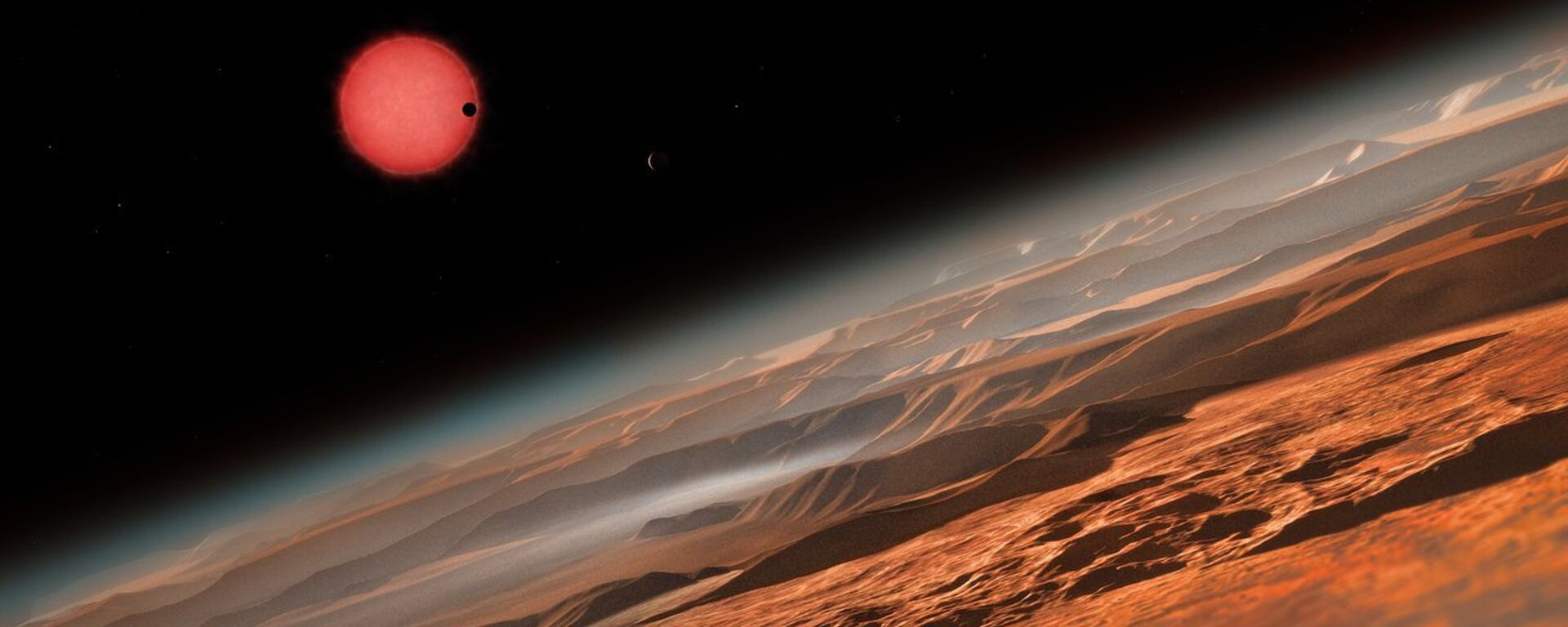https://sputnikglobe.com/20220608/cosmic-dawn-scientists-say-first-stars-formation-ended-over-one-billion-years-after-big-bang-1096133360.html
Cosmic Dawn: Scientists Say First Stars' Formation Ended Over One Billion Years After Big Bang
Cosmic Dawn: Scientists Say First Stars' Formation Ended Over One Billion Years After Big Bang
Sputnik International
Researchers of the cosmos are still investigating the early years (or early hundreds of millions of years) of our universe, studying what little echoes they... 08.06.2022, Sputnik International
2022-06-08T18:53+0000
2022-06-08T18:53+0000
2023-04-12T16:57+0000
world
science & tech
space
https://cdn1.img.sputnikglobe.com/img/07e6/03/0f/1093907754_0:519:2719:2048_1920x0_80_0_0_b6b38341f9f60bfaab59fe24ce578a47.jpg
Scientists from the Max Planck Institute for Astronomy in Germany have managed to determine a more accurate timeframe for the period when the universe’s first stars were formed, putting it at 1.1 billion years after the Big Bang.During this period, which is dubbed the Cosmic Dawn, primordial elements bundled together forming the first stars and galaxies, and neutral intergalactic hydrogen was ionised. The date when the so-called ‘re-ionisation’ of all of the universe's hydrogen was complete is considered the end of the Cosmic Dawn, and is what the Max Planck Institute cosmologists managed to pinpoint.Previous estimates claimed that this period, which followed the Dark Age when there was practically no source of light emission in the universe, started around 250 to 350 million years after the Big Bang and ended around 900 million years after the cosmic event that created the universe. However, by studying 67 quasars - very bright star-like objects at the centre of galaxies - researchers determined that the Cosmic Dawn ended almost 200 million years later than previously thought.The cosmologists used a Chile-based large telescope and the Hawaii-based W. M. Keck Observatory to observe several dozen quasars that are believed to have formed during the Cosmic Dawn. The echoes of their emissions could still be studied, specifically the spectrum of the light they emitted.The scientists were looking for the so-called "absorption lines" - the periods of time where certain portions of quasars' emission spectre was absent due to being absorbed by unionised hydrogen in space. By determining when quasar emissions were no longer blocked by neutral hydrogen, researchers managed to determine the moment most of space hydrogen was ionised.The more accurate estimates of the end of the Cosmic Dawn period suggest that stars and galaxies created during this period are actually closer to our galaxy and did not drift from the Milky Way due to the universe's expansion as much as scientists originally thought. This, in turn, strengthens hopes that the newly launched James Webb Space Telescope will have a shot at catching their light emissions. Likewise, that the telescope will enable study on how these stellar objects looked in distant times. Since their light had to travel billions of light-years, the telescope will effectively be looking into those stars' past.Let's stay in touch no matter what! Follow our Telegram channel to get all the latest news: https://t.me/sputniknewsus
https://sputnikglobe.com/20220604/astronomers-find-super-earth-four-times-bigger-than-ours-in-close-stars-habitable-zone-1095992066.html
Sputnik International
feedback@sputniknews.com
+74956456601
MIA „Rosiya Segodnya“
2022
Tim Korso
https://cdn1.img.sputnikglobe.com/img/07e6/03/0d/1093831826_0:0:216:216_100x100_80_0_0_e3f43a960af0c6c99f7eb8ccbf5f812c.jpg
Tim Korso
https://cdn1.img.sputnikglobe.com/img/07e6/03/0d/1093831826_0:0:216:216_100x100_80_0_0_e3f43a960af0c6c99f7eb8ccbf5f812c.jpg
News
en_EN
Sputnik International
feedback@sputniknews.com
+74956456601
MIA „Rosiya Segodnya“
Sputnik International
feedback@sputniknews.com
+74956456601
MIA „Rosiya Segodnya“
Tim Korso
https://cdn1.img.sputnikglobe.com/img/07e6/03/0d/1093831826_0:0:216:216_100x100_80_0_0_e3f43a960af0c6c99f7eb8ccbf5f812c.jpg
science & tech, space
Cosmic Dawn: Scientists Say First Stars' Formation Ended Over One Billion Years After Big Bang
18:53 GMT 08.06.2022 (Updated: 16:57 GMT 12.04.2023) Researchers of the cosmos are still investigating the early years (or early hundreds of millions of years) of our universe, studying what little echoes they can still come across. Echoes are background microwave radiation and light from quasars, which are extremely luminous stellar-like objects at the centre of galaxies.
Scientists from the Max Planck Institute for Astronomy in Germany have managed to determine a more accurate timeframe for the period when the universe’s first stars were formed, putting it at 1.1 billion years after the Big Bang.
During this period, which is dubbed the Cosmic Dawn, primordial elements bundled together forming the first
stars and galaxies, and neutral intergalactic hydrogen was ionised. The date when the so-called ‘re-ionisation’ of all of the universe's hydrogen was complete is considered the end of the Cosmic Dawn, and is what the Max Planck Institute cosmologists managed to pinpoint.
Previous estimates claimed that this period, which followed the Dark Age when there was practically no source of light emission in the universe, started around 250 to 350 million years after the Big Bang and ended around 900 million years after the cosmic event that created the universe. However, by studying 67 quasars - very bright star-like objects at the centre of galaxies - researchers determined that the Cosmic Dawn ended almost 200 million years later than previously thought.
The cosmologists used a Chile-based large telescope and the Hawaii-based W. M. Keck Observatory to observe several dozen quasars that are believed to have formed during the Cosmic Dawn. The echoes of their emissions could still be studied, specifically the spectrum of the light they emitted.
The scientists were looking for the so-called "absorption lines" - the periods of time where certain portions of quasars' emission spectre was absent due to being absorbed by unionised hydrogen in space. By determining when quasar emissions were no longer blocked by neutral hydrogen, researchers managed to determine the moment most of space hydrogen was ionised.
The more accurate estimates of the end of the Cosmic Dawn period suggest that stars and galaxies created during this period are actually closer to our galaxy and did not drift from the
Milky Way due to the universe's expansion as much as scientists originally thought. This, in turn, strengthens hopes that the newly launched James Webb Space Telescope will have a shot at catching their light emissions. Likewise, that the telescope will enable study on how these stellar objects looked in distant times. Since their light had to travel billions of light-years, the telescope will effectively be looking into those stars' past.
Let's stay in touch no matter what! Follow our Telegram channel to get all the latest news: https://t.me/sputniknewsus 





